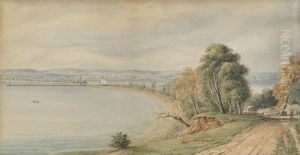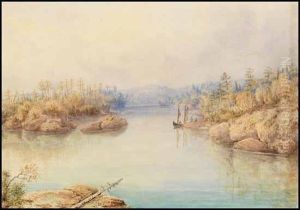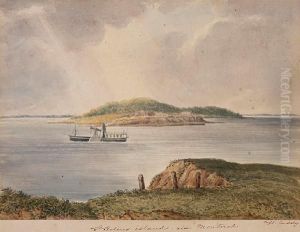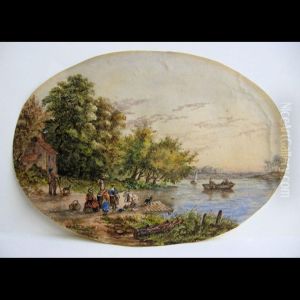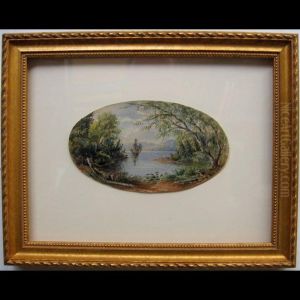John Herbert Caddy Paintings
John Herbert Caddy was an English-Canadian artist, soldier, and topographer known for his detailed watercolors and drawings, many of which depict Canadian landscapes and scenes of Indigenous life. Born in England in 1801, Caddy was educated at the Royal Military Academy in Woolwich and began his military career in the Royal Engineers.
Caddy was stationed in a variety of locations throughout his military career, including stints in the Mediterranean and West Indies. However, his most significant artistic contributions stem from his time in Canada, where he was posted in 1837. This deployment came at a tumultuous time, as the Rebellions of 1837-1838 were underway in Lower Canada (now Quebec) and Upper Canada (now Ontario). Caddy's work from this period provides valuable historical insight into the landscapes and people of the region, as well as the military activities in which he was involved.
After retiring from the military in 1856 due to ill health, Caddy continued to pursue his artistic interests. His drawings and paintings are notable for their technical skill and their documentation of early Canadian life, including the customs and dwellings of various Indigenous tribes. Caddy's works are considered important records of the time due to their accuracy and detail.
Caddy’s artistic legacy, however, is not limited to his visual art. He was also known for his diaries, which provide a rich narrative of his experiences in Canada and his artistic process. His work is held in several Canadian institutions, including the Archives of Ontario and the National Gallery of Canada. John Herbert Caddy passed away in 1883, leaving behind a body of work that continues to be of interest to historians, art collectors, and those interested in the early colonial history of Canada.
